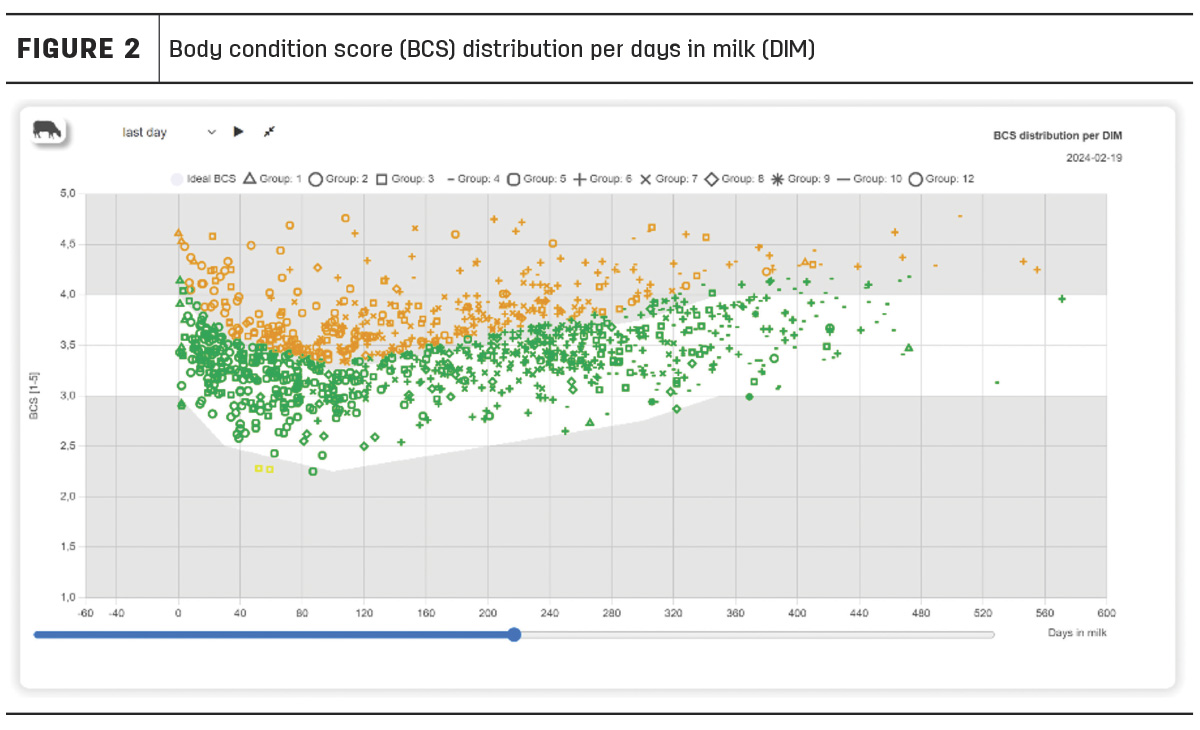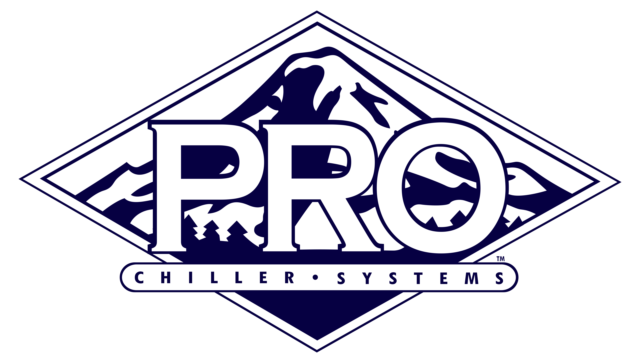Maximizing efficiency and minimizing costs are paramount in today's dairy production systems. In an industry where every penny counts, technological innovations play a crucial role in reshaping traditional practices, and one such innovation is the integration of 3D cameras.
In this article, we explore the economic advantages of adopting 3D imaging technology (3DIT) in U.S. dairy farms, analyzing some key areas of savings and potential return on investment (ROI). Some of these areas are lameness detection, reproductive efficiency, body condition scoring, ketosis and feed efficiency.
ROI, a livestock producer's best friend
ROI assesses how much money you get back compared to how much you put in. It helps you figure out if something is a good investment or not. The ROI for any new technology applied in a dairy farm context can typically be calculated as Figure 1.

Where:
Net profit = revenue generated - total costs
Initial investment = cost of purchasing and implementing the 3DIT
This formula provides a percentage that represents the profitability of the investment relative to its cost. A positive ROI indicates the investment has generated profits, while a negative ROI indicates losses.
To determine the annual ROI of implementing 3DIT, we need to start by evaluating the total costs and benefits of the specific areas improved by this technology. Examples of such areas include lameness, reproductive efficiency, ketosis and feed efficiency, and their interconnection with body condition score (BCS). Let's explore the economic impact of each of these areas.
Lameness
Lameness remains a prevalent issue in dairies, adversely affecting both cow well-being and their productivity. Research has explored its economic impact by quantifying the direct costs associated with treatment together with reduced cow productivity. Insights from veterinarians, industry data and dairy associations have established baseline figures for lameness-associated costs of between $100 and $400 per cow per year.
A recent study published in the Journal of Dairy Science looked at the incidence and costs of digital dermatitis, interdigital dermatitis, interdigital phlegmon, sole ulcer and white-line disease. The most prevalent foot disorder was digital dermatitis, followed by interdigital dermatitis, sole ulcer, white-line disease and interdigital phlegmon. Housing conditions significantly influenced the prevalence of sole ulcer and white-line disease, while scraping frequency and footbath application thresholds were major determinants of digital dermatitis occurrence. Average costs per lame cow were determined to be $308 per year.
Implementing early lameness detection protocols that result in timely intervention and reduced treatment costs can result in average savings of $50 per cow per year from minimized treatment expenses alone. As a result, a dairy with 1,000 lactating cows could realize annual cost savings of $50,000 – and that’s not even taking into consideration the positive impacts on production, reproduction and length of productive life.
Reproductive efficiency
The use of 3DIT enhances dairy herd reproduction, leading to significant milk production gains. By enabling early estrus and health issue detection, 3DIT increases successful insemination and pregnancy rates, reduces reproductive failures and aids in superior genetic selection. This results in higher milk production equating to an additional $100 per cow per year ($100,000 per 1,000 cows). The technology's long-term benefits amplify its value, promising sustained herd productivity and profitability improvements.
Efficient reproduction management is crucial for maintaining a productive dairy herd. This technology can monitor cows for signs of heat more accurately, leading to better timing of insemination and reduced services per conception. This increased efficiency can result in higher pregnancy rates. The additional revenue comes from more calves being born and raised, leading to either an increase in milk production or more animals available for sale.
Ketosis
Ketosis poses a major health challenge for dairy cows, affecting milk production and overall herd well-being. Utilizing 3DIT to detect it early can result in savings of $30 per cow per year in treatment expenses ($30,000 per 1,000 cows). Early intervention reduces the severity of ketosis and prevents secondary health issues, improving overall herd health and productivity. By addressing metabolic imbalances promptly, farmers can maintain optimal milk production levels and minimize economic losses associated with decreased milk output. Proactive ketosis management not only enhances cow welfare but also ensures long-term profitability and herd health.
Feed efficiency
The integration of 3DIT offers significant advantages on a farm’s feed utilization, potentially saving $50,000 annually per 1,000 cows. Inefficient feeding practices result in unnecessary expenses due to feed wastage, which 3DIT helps mitigate by accurately tracking feed intake and behavior. Tailoring nutrition programs to individual cow needs enhances milk production, reproductive performance and herd health, contributing to long-term profitability. By maximizing nutrient utilization, farmers can sustain higher milk yields and improve quality, while also reducing the risk of metabolic disorders and diseases. Despite seeming modest at $50 per cow annually, the cumulative effect over multiple lactations and the entire herd ensures substantial long-term cost savings and sustainability. Leveraging the insights provided by 3DIT allows farmers to achieve greater efficiency, productivity and profitability while promoting herd health and well-being.
Body condition score (BCS)
Monitoring BCS is essential for effective dairy herd management, providing vital insights into cows’ health and well-being (Figure 2). Through 3DIT, farmers can accurately assess BCS changes, enabling early detection of health issues like lameness and metabolic disorders. Monitoring BCS optimizes feed allocation, potentially saving thousands of dollars in feed costs while maximizing milk production efficiency. Proactive management of conditions like ketosis leads to significant savings on treatment costs and improves overall herd productivity, enhancing profitability and sustainability.

Ketosis and BCS are interrelated in dairy herd management, as a decrease in BCS predisposes cows to ketosis. Monitoring BCS enables early identification of cows at higher risk of ketosis, allowing farmers to implement preventive measures and reduce associated treatment costs while enhancing herd productivity.
Research shows a significant correlation between lameness and BCS, with a 1-point decrease in BCS leading to a 50% higher risk of lameness in dairy cows. Regular BCS assessments empower farmers to proactively address changes in cow health, preventing lameness and its associated economic costs (Figure 3).

Reproductive efficiency is closely linked to BCS, with a cow's condition directly influencing its reproductive performance and fertility. Proactive BCS monitoring and management optimize reproductive outcomes, leading to improved fertility rates, reduced calving intervals, reduced culling rates and increased profitability on dairy farms.
Economics of 3DIT
The integration of 3DIT systems offers a multifaceted approach to dairy farms, enhancing efficiency, reducing costs and improving overall herd health. This technology's impact spans several critical areas of dairy management, presenting a cohesive strategy for improving farm productivity and profitability.
Starting with lameness detection, the ability of 3DIT systems to identify issues early can lead to significant savings, which are estimated at approximately $50 per cow per year. This early detection is crucial, as it not only minimizes treatment costs but also prevents the effects of decreased milk production due to lameness. The transition from this point to reproductive efficiency is a given as healthier cows exhibit better reproductive performance. Improvements here estimated to yield an additional $100 per cow per year in milk production stem from accurate heat detection and reduced breeding intervals, showcasing how optimizing one area can positively affect another.
Moreover, the integration of 3DIT extends to ketosis prevention, where proactive health management can save around $30 per cow annually. This preventive approach ensures consistent milk production and underscores the interconnectedness of cow health to overall farm productivity. By maintaining a healthy herd, farms can avoid the pitfalls of ketosis and other metabolic disorders, thereby stabilizing milk output and enhancing farm efficiency.
These areas lead to feed efficiency optimization, where the strategic use of technology can save $50 per cow annually. Optimizing feed efficiency not only improves the economic return on feed investment but also supports the health of the herd through better nutrition. This optimization directly influences milk yield and quality, further illustrating how interconnected health management and nutritional strategies are to achieving operational excellence.
The ROI of adopting 3DIT, set against a modest rental cost of $1 per cow per month, demonstrates the technology's value across these diverse areas. With estimated annual ROIs ranging from 200% to 500%, depending on the focus area, there is a compelling economic argument for integrating 3DIT into dairy operations. This not only addresses specific challenges within each area – lameness, reproductive efficiency, ketosis prevention and feed optimization – but also highlights the synergistic benefits of a comprehensive health and efficiency strategy.
In conclusion, the integration of 3DIT systems into dairy management practices offers a blueprint for the future where technology-driven solutions enable farms to go through the complexities of modern dairy production more effectively. By adopting 3DIT, farmers can unlock significant economic benefits, enhance animal well-being and position their operations for success in an increasingly competitive market.




